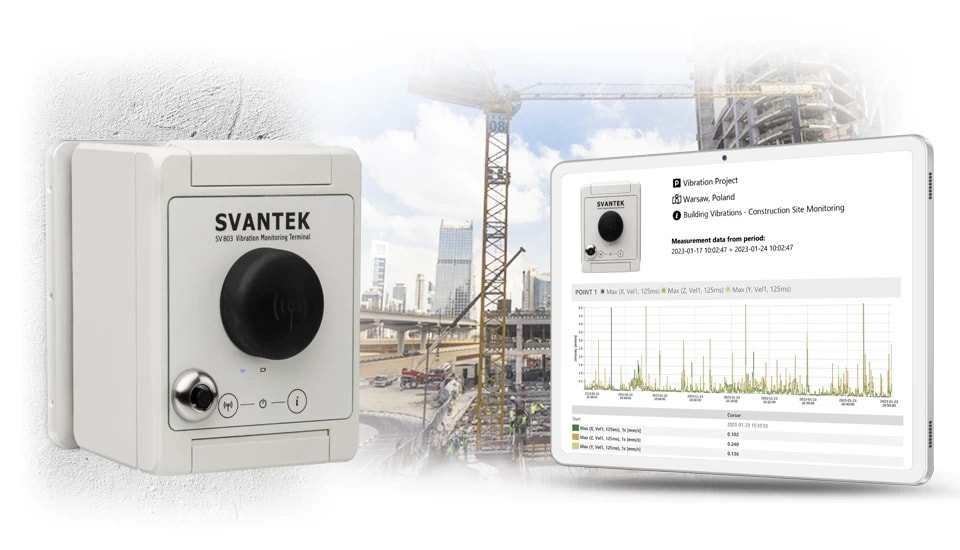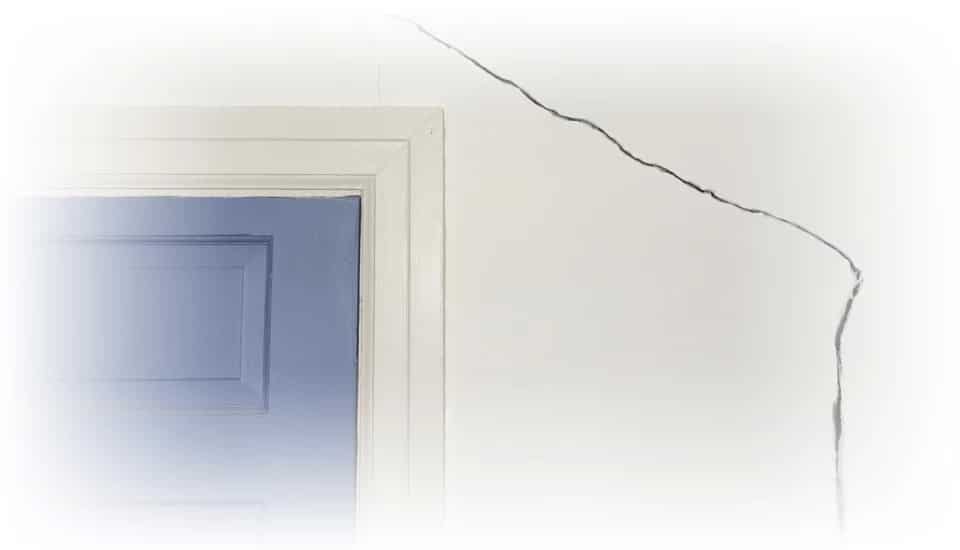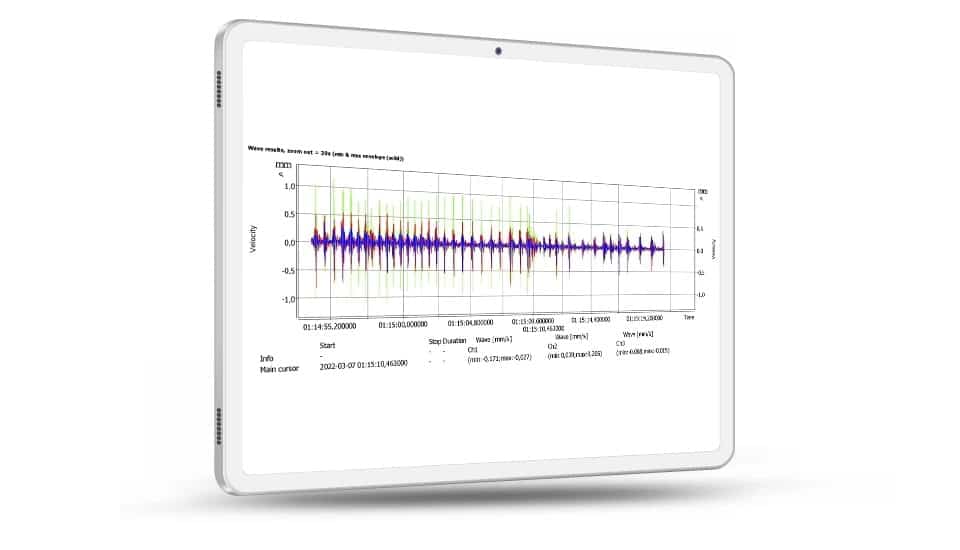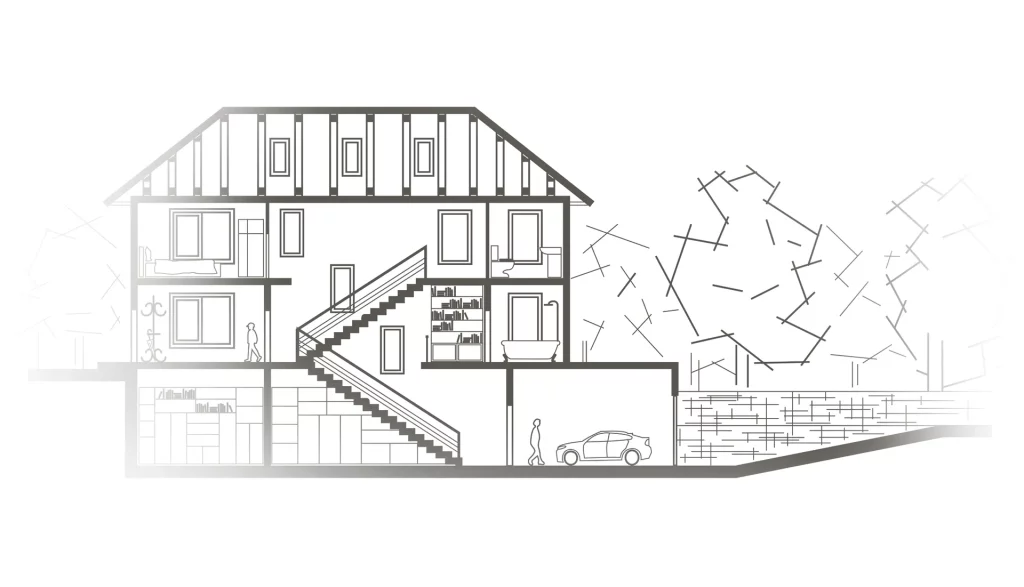Building vibration measurement: methods, evaluation criteria, what equipment to use and how to present the results.
The process of measuring building vibrations is governed by various regulations across countries. In Germany, the most commonly used standard for building vibration measurements is DIN 4150-3. Meanwhile, in Poland, the standard for vibrations transmitted from the ground to buildings is PN-B-02170:2016-12. Both standards outline the methods for measuring building vibrations, the indicators or scales used to determine the extent of influence, and the appropriate equipment to use, as well as the format for presenting measurement results.
The measurement of building vibrations involves the use of velocity, acceleration, or displacement parameters. The choice of the appropriate parameter depends on a thorough analysis of the building structure. For each parameter, the frequency of vibrations is also considered. The standard frequency range for testing is typically between 0.5 Hz and 100 Hz, with a velocity range of 0.0001 m/s to 1 m/s. For the measurement of short-period vibrations, it is recommended to use third-octave bands or Fast Fourier Transform (FFT) analysis up to 100 Hz.


The building vibration measurements are conducted with a meter or analyzer with an attached vibration accelerometer or geophone. The sensitivity of the geophone should be at least 15 V/ms-1, while the suggested sensitivity for transducers is 10 V/g. As for accredited methods, it is necessary to determine the uncertainty of the readings. The target uncertainty should be less than 20%. It is necessary to be able to determine the duration of vibration based on the measurements.
Measurement points shall be arranged, taking into account the measurement method used. The points should determine three measurement directions in accordance with the coordinates of the rectangular system—two horizontal x and y and a vertical z. Transducers should be placed on rigid nodes of the structure; they should be attached directly to the building structure.

A well-executed vibration measurement report should clearly outline the purpose of the measurement, specify the standard used (e.g. German DIN 4150-3 or Polish PN-B-02170:2016-12), detail the chosen measurement method, describe the sources of vibrations, and list the equipment and measurement objects used. Results should be presented as vibrograms. The report should indicate the location of the measurement points and include a representation of the vibration time courses. Additionally, the report should provide accurate information regarding meteorological conditions and any disturbances that may have impacted the measurement results.

Vibrations can be transmitted to buildings through the ground and their structures, via a material path. These vibrations can stem from human-caused sources, such as passing trains, heavy vehicles, construction, and maintenance work. It’s also important to think about the effects of technical equipment inside buildings, like ventilation systems, which can also cause vibrations that travel through the structure to upper or lower floors.
Depending on the strength of the vibrations acting on the building, they can cause significant damage to the structure. Destruction can manifest itself, for example, in cracks in plaster. Material sounds are ultimately emitted into the rooms inside the building as airborne sounds. The harmfulness of vibrations to people and machinery inside buildings should be considered in addition to the harmfulness of vibrations to the structure.


A vibrogram is a record of the change in speed, acceleration, or displacement of vibrations at a given point and direction given as a function of time. Thus, it is a record of vibration parameters that occur at a given measurement point for a specific vibration direction and time. Measurements of the vibration of buildings use vibration spectra in reports for the vibration measurements or measurement models carried out.
In Polish standards, short-term vibrations are vibrations that last no more than 3 minutes per day. Long-term vibrations are vibrations that last from 3 minutes to 30 minutes per day. The third type of vibration is continuous vibration, which is vibration that lasts more than 30 minutes per day. In German DIN, the short term vibration definition is limited to vibrations that do not occur often enough to cause structural fatigue and which does not produce resonance in the structure being evaluated.

The MRSA (Modal Response Spectrum Analysis) and THA (Time History Analysis) methods are used to determine the response of a building model to kinematic forcing. The MRSA method is based on the use of a response spectrum, while the THA method uses the integration of equations of motion over time. The MRSA method allows the use of a velocity response spectrum.


Kinematic forcing is the vibration of the building caused by the movement of the foundation. The forcing is presented in the form of vibrograms on the x, y, and z axes. The determination of the force is done using MRSA or THA methods. The measurement point should be at a rigid node of the structure on the side of the vibration source. The force can be determined in an already operating building or at the design stage. If only the design of the building is available, it is possible to predict the force based on similar cases.
The first condition for ignoring the influence of vibrations is the value of the amplitude of acceleration of horizontal ground motion at the site of the building; it should be less than 0.05 ms2. To meet this condition, it is necessary to place the building at a distance of at least 25 m from the axis of the railroad track, at least 15 m from the axis of the tramway track, or the axis of the nearest road lane, at least 20 m from the source of vibrations associated with construction work, and a distance of more than 60 m from the route of road vibrating rollers. The building should also be outside the seismic influence zone.

Following measurement standard there are two types of damage: non-structural damage and damage to load-bearing elements. The first type of damage primarily consists of scratches and cracks in plaster, as well as loosening of door and window fixings. You may also notice wall tiles and cladding falling off. Damage to load-bearing elements is characterized by cracks and fractures in foundations, load-bearing walls, lintels, and pillars. Such damage severely weakens the strength of the building structure.
Sources of vibrations that can damage a building are, for example, movements caused by construction work on neighboring properties, ground movements caused by seismic tremors associated with mine operations, or constant vibrations associated with the passage of heavy vehicles, streetcars, or trains.

In such cases, the SVANTEK testing laboratory employs DIN 4150-3, “Vibrations in Buildings, Part 3: Effects on Structures,” which allows for the measurement of vibration effects on structures other than the building.